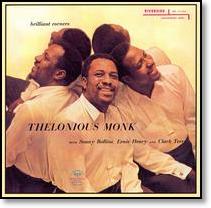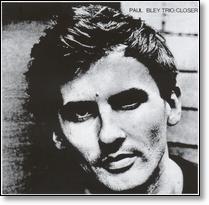A Consumer Guide to the Trailing Edge: April, 2008
Recycled Goods (#52)
by Tom Hull
 |
 |
When I shelved Recycled Goods back in January, I had hoped that the time I saved could be put to better use, like on my book, or at least on a column that actually paid something. It's been a lousy winter, and I've made little (or more precisely no) progress on either. Meanwhile, my incoming mail petered down to nothing but jazz, and that may be souring me on the genre. I've taken breaks sampling new records on Rhapsody, and figured I could do the same with reissues. Also figured that since the main reason for doing Recycled Goods was always to accumulate a stockpile of reviews for that long procrastinated reference website, it wouldn't hurt to add a few when I do have time and something to say. So this marks a partial resumption of Recycled Goods. I'll open a file at the start of each month, add things when I feel like it, and post it at the end. No promises on how much each month, and no crunch to make a bad month look not so bad. What follows isn't very promising: it's actually just stuff that fell off Jazz Prospecting, mostly written shorter but tighter. Also lets me cite a couple of pick hits, assuming I have that many.
Briefly Noted
The Cannonball Adderley Sextet: In New York (1962 [2008], Riverside/Keepnews Collection): A bop band that swings effortlessly because they so enjoy r&b groove, but their slickness leaves a greasy aftertaste, which isn't helped by tenor sax man Yusuf Lateef's forays into exotica; a live throwaway, hard to take seriously, impossible to dislike. B
Louis Armstrong All Stars: Live in Zurich, Switzerland 18.10.1949 (1949 [2007], TCB): With the big band era over, the jazz statesman from New Orleans downsizes and upgrades, sharing the stage with Earl Hines, Barney Bigard, Jack Teagarden, and Velma Middleton, each getting worthy feature space, as they jump the usual set of good ol' good 'uns. B+
Paul Bley: Closer (1965 [2008], ESP-Disk): A piano trio with Steve Swallow and Barry Altschul, delightfully light and jaunty, owing no doubt to the writing of past and future wives, Carla Bley and Annette Peacock. A-
Bill Evans: Portrait in Jazz (1959 [2008], Riverside/Keepnews Collection): A moment in transition after his triumph with Miles Davis on Kind of Blue, as Evans moves away from his group work and into his first classic piano trio, with magic drummer Paul Motian and the newfound, short-lived bassist Scott LaFaro; they offset the pianist's studied introversion. A-
Duke Ellington and His Orchestra: Live in Zurich, Switzerland 2.5.1950 (1950 [2007], TCB): Not succumbing to the end of the big band era, Ellington hangs in there with a ragtag lineup and a mixed bag of pieces, with Ray Nance shouting "St. Louis Blues" and Kay Davis cooing "Creole Love Call"; Don Byas fills the vacant tenor sax chair, and shoots "How High the Moon"; and of course "The Jeep Is Jumpin'." B+
Milt Jackson/Wes Montgomery: Bags Meets Wes! (1961 [2008], Riverside/Keepnews Collection): Montgomery's guitar, and Wynton Kelly's piano, tend to lurk in the background, filling in softly while Jackson works his usual vibes magic, swinging, accenting, floating off into space. B+
Bob James Trio: Explosions (1965 [2008], ESP-Disk): An early avant-garde phase for the future smooth jazz pianist, with Robert Ashley and Gordon Mumma helping out on the electronic tape collage, and bassist Barre Phillips slapping, plucking, and sawing off tangents the piano may or may not wish to follow. B+
Steve Lacy: The Forest and the Zoo (1966 [2008], ESP-Disk): Two 20-minute pieces, "Forest" and "Zoo," cut live in Buenos Aires with South Africans Johnny Dyani and Louis Moholo on bass and drums. The soprano sax great is in classic squeaky form, but the real jolt to the memory here is trumpeter Enrico Rava -- genteel and laconic of late, he snatches these pieces like a pit bull and never lets go. A-
Wynton Marsalis: Standards & Ballads (1983-98 [2008], Columbia/Legacy): Not just standards, given one original from Citi Movement; not all ballads either, though mostly sluggish; only 8 of 14 tracks come from his generally excellent Standard Time series, so not really a sampler thereof -- in fact, nothing from Vol. 6: Mr. Jelly Lord; one vocal track is incongrous here, but organic to the Tune In Tomorrow soundtrack, the rest of which is better than anything here, possibly excepting the lovely "Flamingo." B
Blue Mitchell: Blue Soul (1959 [2008], Riverside/Keepnews Collection): Trumpet player, made ends meet in R&B groups from Earl Bostic to Ray Charles, played hard bop with a soulful polish, both on his own records and with Horace Silver; a classy sextet with Curtis Fuller on trombone, Jimmy Heath on tenor sax, and Wynton Kelly on piano, they can cook, but shine even more on the slow ones. A-
Thelonious Monk: Brilliant Corners (1956 [2008], Riverside/Keepnews Collection): The title cut was so unconventional none of 25 studio takes nailed it, so the record was famously pieced together after the fact; you can still sense the fear and awe the band, including young Sonny Rollins, felt in facing Monk's tunes -- a solo piano cover of "I Surrender Dear" comes as blessed relief, but turns out every bit as brilliant. A
New York Art Quartet (1964 [2008], ESP-Disk): One-shot avant-garde group, at least until they reunited for a 35th Reunion record, but an important item in trombonist Roswell Rudd's discography -- he dominates the rough interplay with alto saxist John Tchicai, while percussionist Milford Graves is at least as sparkling; the sole artiness is the cut that frames a poem, but it too is a signpost of the times, "Black Dada Nihilismus," by Amiri Baraka. A-
Additional Consumer News
Notes
Copyright © 2008 Tom Hull.